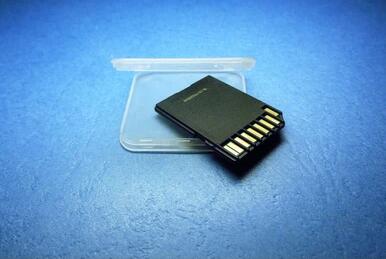When an SD card says it’s full even though it’s empty, there are several possible reasons:
1. File System Corruption
Cause: The file system might be corrupted, which can cause incorrect reporting of available space.
Solution: Try using a disk check utility or formatting the SD card. Note that formatting will erase all data, so ensure you have backed up any important files.
2. Hidden Files or System Files
Cause: Some files or system files may be hidden from view.
Solution: Check for hidden files using your operating system’s file explorer. On Windows, you can enable viewing hidden files in the View tab. On macOS, you can use the Terminal command ls a.

3. Partition Issues
Cause: There might be an issue with how the partitions on the SD card are configured.
Solution: Use a partition management tool to check and manage partitions. You may need to reformat or repartition the SD card.
4. Card Reader or Device Issues
Cause: Sometimes, the problem might be with the card reader or the device you’re using rather than the SD card itself.
Solution: Try using a different card reader or device to see if the issue persists.
5. Firmware or Software Bugs
Cause: Bugs in the SD card’s firmware or the software used to read it can cause incorrect space reporting.
Solution: Update the firmware of the SD card if possible, or use alternative software to read the SD card.
6. Faulty SD Card
Cause: The SD card itself might be faulty or experiencing physical damage.
Solution: Test the card in another device or use a different SD card to see if the issue is with the card itself. If the card is faulty, you might need to replace it.
7. Virus or Malware
Cause: A virus or malware could be causing issues with how the SD card’s space is reported.
Solution: Run a full antivirus scan to check for and remove any malware.
8. Capacity Mismatch
Cause: Sometimes, counterfeit SD cards are sold with incorrect storage capacities.
Solution: Use a tool to check the true capacity of the SD card. If the card is counterfeit, you may need to replace it.
9. Residual Data from Previous Use
Cause: Even if files are deleted, some data might still be present or the space might not be properly reclaimed.
Solution: Format the SD card to ensure that all space is correctly recognized and available.
Troubleshooting Steps
Check for Hidden Files: Look for hidden files or system files on the SD card.
Use Disk Check Utilities: Run a disk check utility to scan for and fix file system errors.
Format the SD Card: If data is not critical, formatting the SD card can resolve many issues.
Test on Different Devices: Try the SD card on different devices to rule out compatibility issues.
Use Recovery Tools: If the card is still showing incorrect space, use data recovery software to see if files are recoverable.
If you continue to have issues, consulting with a professional data recovery service may be necessary.
About us and this blog
Panda Assistant is built on the latest data recovery algorithms, ensuring that no file is too damaged, too lost, or too corrupted to be recovered.
Request a free quote
We believe that data recovery shouldn’t be a daunting task. That’s why we’ve designed Panda Assistant to be as easy to use as it is powerful. With a few clicks, you can initiate a scan, preview recoverable files, and restore your data all within a matter of minutes.
Subscribe to our newsletter!
More from our blog
See all postsRecent Posts
- Reformat external hard drive from mac to pc 2025-01-20
- i can’t see my secopnd hard drive on my mac 2025-01-20
- How to reformat external hard drive for mac and pc? 2025-01-20










